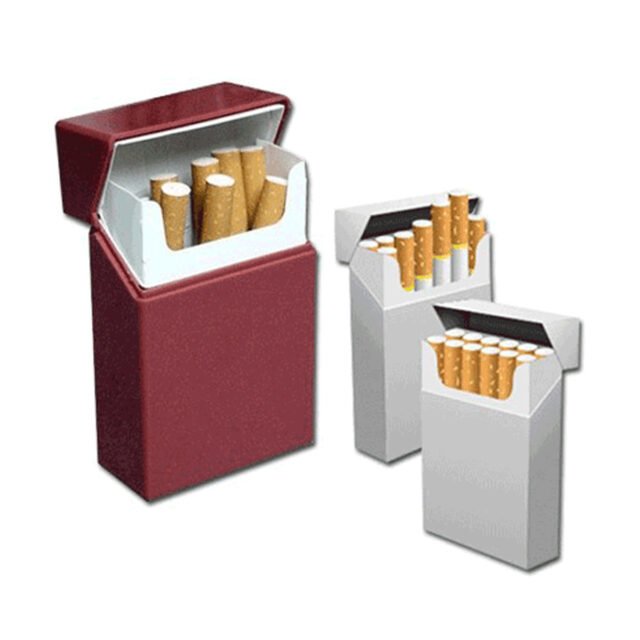Custom cigarette packaging has evolved rapidly in recent years. As consumer expectations change and regulations tighten, the tobacco industry is embracing new ideas to stay competitive. Below are the latest trends and innovations that are shaping the future of this packaging sector.
Sustainable Packaging Materials Gain Momentum
Eco-friendly packaging is no longer just a trend—it’s becoming a requirement. With growing awareness of environmental damage, brands are seeking materials that reduce their carbon footprint. Many cigarette packaging boxes companies are now moving toward biodegradable, recyclable, and compostable packaging solutions.
Paperboard made from recycled materials is gaining popularity. It offers the same durability as traditional materials but is kinder to the planet. Moreover, water-based inks and non-toxic adhesives are replacing harmful chemicals. These changes reduce waste while still offering a premium look and feel.
Another innovation is the use of seed-infused paper. Once discarded, this paper can grow into a plant, making the packaging a zero-waste product. Though still in the testing phase for cigarettes, this concept reflects how packaging is blending function with sustainability.
Customers are also driving this shift. More people are asking questions about how products are made and packaged. In response, brands are now promoting their eco-friendly packaging as part of their identity. Sustainable packaging is not just good for the environment—it also improves brand image and boosts consumer loyalty.
Packaging manufacturers are innovating by creating lighter materials that reduce shipping costs and energy use. These new materials are not only better for the planet but also save businesses money in the long run. As demand grows, we can expect even more advancements in green technology tailored for the cigarette industry.
Smart Packaging and Embedded Technology
Technology is playing a bigger role in packaging than ever before. Cigarette brands are now exploring smart packaging to connect with customers in exciting ways. This includes QR codes, NFC chips, and even augmented reality features.
With a simple scan, users can access brand stories, promotions, or even age verification systems. These tools offer direct engagement and give brands a chance to share their message. Smart packaging also helps prevent counterfeiting. It allows manufacturers to trace each pack through the supply chain, ensuring authenticity.
Another innovation is temperature-sensitive ink. This ink changes color depending on the environment, adding a visual and interactive element. It’s often used to ensure freshness or highlight limited edition designs.
Retailers also benefit from these changes. Smart packaging makes inventory management easier. Scanning a chip or code reveals product information instantly, reducing human error.
These innovations improve the experience for everyone involved—manufacturers, retailers, and consumers. As the technology becomes cheaper and more accessible, it’s likely we’ll see even more creative uses of smart features in cigarette packaging in the near future.
Minimalist Design with Maximum Impact
Minimalist packaging design is one of the most noticeable trends in the cigarette industry today. Clean lines, soft color palettes, and limited text are becoming common features. Instead of flashy graphics, brands are focusing on elegance and simplicity.
This trend reflects a broader cultural shift. Today’s consumers prefer products that look clean and sophisticated. Overcrowded designs can feel overwhelming. Minimalist designs offer a refreshing contrast, making the product feel modern and upscale.
Despite its simplicity, this design style does not compromise on identity. Designers use typography, color balance, and small graphic accents to create a strong brand impression. This approach often results in packaging that feels more luxurious and thoughtfully made.
The minimalist style also helps products stand out on shelves. In a market filled with complex visuals, a simple design can catch the eye more effectively. It creates curiosity and encourages people to pick up the pack.
This trend is also regulatory-friendly. Many countries now have strict packaging rules for tobacco. Minimalist designs make it easier for companies to comply while still maintaining a recognizable brand presence.
Personalization and Limited Edition Releases
Personalized packaging is becoming a powerful marketing tool. Consumers love to feel special, and custom packaging can create a deeper emotional connection. Many cigarette companies are now offering personalized options for events, holidays, or loyalty programs.
This strategy is particularly effective for limited edition releases. Special designs for holidays, local festivals, or collaborations with artists create excitement. These packs often become collector’s items, adding value beyond the product itself.
The personalization trend also extends to regional designs. Brands create different packaging for different markets, reflecting local culture or preferences. This makes the product feel more connected to its audience.
Modern digital printing makes personalization easier and more cost-effective. Unlike traditional methods, digital printing allows for short runs with high quality. This means even small batches can have a unique look without high expenses.
Enhanced Security Features
Security in packaging is more important than ever. The rise in counterfeit cigarettes has pushed brands to invest in tamper-evident and track-and-trace technologies. These innovations help ensure product safety and build trust with consumers.
One popular method is the use of holographic seals. These are hard to replicate and provide a quick way for consumers to check authenticity. Color-shifting inks and microtext are also being used to enhance security.
Track-and-trace features use QR codes or barcodes linked to a central database. This allows every pack to be traced through the supply chain. It helps prevent fraud and reduces the risk of illegal sales.
Invisible ink and ultraviolet (UV) markings are another layer of protection. These features are only visible under special lighting, making them difficult for counterfeiters to copy.
These measures also help companies meet international regulations. Governments in many countries require secure packaging to prevent tax loss and protect public health.
Interactive and Experience-Based Packaging
Today’s consumers expect more than just a product—they want an experience. Packaging that entertains or engages is gaining popularity. Cigarette brands are exploring creative ways to surprise and delight their customers.
Some packaging now includes puzzles, peel-away layers, or printed games. Others use materials that change texture or appearance when touched. These features create a sensory connection, making the act of opening a pack more enjoyable.
Augmented reality (AR) is also being explored. By scanning the pack, users can access virtual content. This might include animated graphics, digital stories, or social media links. It turns packaging into a platform for communication and creativity.
This trend is particularly appealing to younger, tech-savvy audiences. It allows brands to interact with users beyond the shelf and create memorable moments.
Experience-based packaging isn’t just fun—it also encourages sharing. Many consumers post interesting packaging on social media, giving brands free promotion. This adds a new layer to marketing efforts and increases customer engagement.
Compliance with Global Packaging Regulations
The tobacco industry is heavily regulated, especially when it comes to packaging. Each country has its own laws, which cigarette companies must follow carefully. Staying compliant while still standing out is a major challenge.
Many regions require warning labels, plain packaging, or standardized colors. These rules limit how much space is available for branding. Despite these limitations, companies are finding creative ways to comply without losing identity.
Some brands use embossing or texture to add a premium feel without breaking the rules. Others focus on the internal packaging—like the lining or paper—to create a unique experience.
These regulations also drive innovation. Brands are forced to think differently and develop packaging that works within strict guidelines. This pressure often leads to smarter and more refined designs.
Working closely with legal and design teams ensures that every detail meets the required standards. It also helps avoid fines and maintains consumer trust. As regulations continue to evolve, packaging strategies must adapt quickly.
Compact and Portable Design Evolution
Consumers today value convenience. This has led to a shift in packaging size and structure. Compact, lightweight designs are becoming more popular in response to busy lifestyles.
Slim packs, foldable formats, and resealable designs are all part of this trend. They fit better in pockets and bags and are easier to carry around. Despite being smaller, they still offer the same protection for the product inside.
This trend is also influenced by urban living. With limited storage space and on-the-go habits, consumers prefer items that don’t take up much room. Compact packaging answers this need perfectly.
Brands are also experimenting with new opening mechanisms. Magnetic closures, slide-out trays, and flip-top lids offer ease of use while keeping the cigarettes fresh. These small touches make a big difference in user satisfaction.
The innovation here lies in balancing size with functionality. Cigarette packaging boxes are evolving to be smarter, not just smaller. They combine sleek design with everyday practicality, which appeals to a modern audience.







